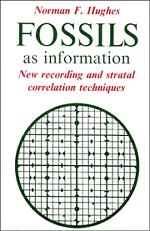Book contents
- Frontmatter
- Contents
- Preface
- Part A Problem of effectiveness
- Part B Proposed solution
- 3 Suggested new Paleontologic Data-Handling Code (PDHC)
- 4 Records are primary
- 5 Nomenclature/language of records
- 6 The Paleotaxon
- 7 Replacing the Genus
- 8 The Record package
- Part C Applications for information-handling
- Part D Further considerations
- Appendices 1 and 2: Worked examples of GOR and PTR forms
- Glossary
- References
- Index
4 - Records are primary
Published online by Cambridge University Press: 02 February 2010
- Frontmatter
- Contents
- Preface
- Part A Problem of effectiveness
- Part B Proposed solution
- 3 Suggested new Paleontologic Data-Handling Code (PDHC)
- 4 Records are primary
- 5 Nomenclature/language of records
- 6 The Paleotaxon
- 7 Replacing the Genus
- 8 The Record package
- Part C Applications for information-handling
- Part D Further considerations
- Appendices 1 and 2: Worked examples of GOR and PTR forms
- Glossary
- References
- Index
Summary
The requirement. From the point of view of any subsequent user of paleontologic records, the materials collected, described and interpreted at any one locality are at least potentially equivalent in general value to those from any other locality. Retrieval of individual locality records, however, is seldom easily achieved under current arrangements, or even possible (see Fig. 4.1 A). The information from each and every locality needs to be available in complete and independent records that can be retrieved and studied without obligate taxonomic or other reference via any other record (see Fig. 4. IB).
The procedure proposed. It is first necessary to set up for all paleontologic material an adequate very simple procedure (detailed in Section 4.5 below) to focus attention on the standards required in making all primary observational records; this parallels fairly closely the provisions of a Paleopalynologic Data-Handling Code (PalynDHC) presented recently for a more restricted purpose (Hughes 1986, pp. 246–248). The simplicity of this Code is such that no permanent ‘organisation’, international or otherwise, would be needed to monitor and direct it.
The present and past custom. In current practice specimens from a new locality are attributed if possible to an existing species, usually only in the form of an occurrence mark on a species list (see Fig. 4.1 A). In most instances this procedure leaves these new specimens without any published usable or interpretable description, and the custom has been reinforced by editorial policies of economy to the point at which the author may not even make such a description.
- Type
- Chapter
- Information
- Fossils as InformationNew Recording and Stratal Correlation Techniques, pp. 25 - 31Publisher: Cambridge University PressPrint publication year: 1989



